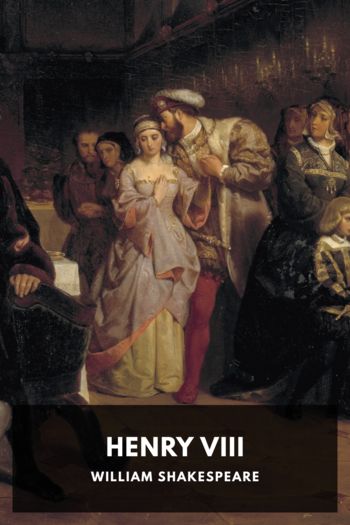Don Quixote by Miguel de Cervantes Saavedra (electric book reader TXT) 📕

Description
Don Quixote is a novel that doesn’t need much introduction. Not only is it widely considered the greatest Spanish literary work of all time, one of the greatest literary works in history, and a cornerstone of the Western literary canon, it’s also considered one of the first—if not the first—modern novels.
This Standard Ebooks edition is believed to be the first ebook edition of Don Quixote to feature a full transcription of translator John Ormsby’s nearly 1,000 footnotes. Ormsby as an annotator deftly explains obscure passages, gives background on the life and times of 1600s Spain, references decisions from other contemporary translators, and doesn’t hold back from sharing his views on the genius—and flaws—of Cervantes’ greatest work.
The story is of the eponymous Don Quixote, a country noble who, in his old age, reads too many chivalric romances and goes mad. After convincing his grubby servant, Sancho Panza, to join him as his squire, he embarks on an absurd and comic quest to do good and right wrongs.
Today Don Quixote’s two volumes are published as a single work, but their publication came ten years apart. Cervantes saw great success with the publication of his first volume, and appeared to have little desire to write a second volume until a different author wrote a spurious, inferior sequel. This kicked Cervantes into gear and he wrote volume two, a more serious and philosophical volume than the largely comic first volume.
Despite being written in 1605 and translated in 1885, Don Quixote contains a surprising amount of slapstick laughs—even for the modern reader—and narrative devices still seen in today’s fiction, including meta-narratives, frame narratives, and metafiction. Many scenes (like Quixote’s attack on the windmills) and characters (like Sancho Panza and Lothario) are so famous that they’re ingrained in our collective culture.
Read free book «Don Quixote by Miguel de Cervantes Saavedra (electric book reader TXT) 📕» - read online or download for free at americanlibrarybooks.com
- Author: Miguel de Cervantes Saavedra
Read book online «Don Quixote by Miguel de Cervantes Saavedra (electric book reader TXT) 📕». Author - Miguel de Cervantes Saavedra
“Who can find a virtuous woman? for her price is far above rubies.” —Proverbs 31:10 ↩
I.e. Pericles, in Plutarch on “False Shame.” ↩
“Our poet” was, of course, Ariosto; but Cervantes has confounded two different stories in Canto 43. It was not the doctor but a cavalier, Rinaldo’s host, who tried the test of the cup. The magic cup, of which no husband of a faithless wife could drink without spilling, figures frequently in old romance. It appears in the ballad of “The Boy and the Mantle,” and also in another of the King Arthur ballads. ↩
This sonnet, like that in Chapter XXIII, was repeated by Cervantes in the play of the Casa de los Zelos—Jornada 2. ↩
Proverb 67. ↩
Proverb 190. ↩
The four S’s that should qualify a lover were sabio, solo, solicito, secreto. It is needless to say that Leonela’s alphabet cannot be literally translated. ↩
Proverb 228—expressive probably of popular anxiety on the eve of a bullfight. ↩
Quartillo—the fourth of a real. ↩
Lautrec and the Great Captain were not engaged in the same campaigns. The former commanded in Italy in the time of Francis I and Charles V, several years after the death of the Great Captain. ↩
I.e. on high saddles with short stirrups. ↩
Only a few lines back we are told Dorothea had fainted, and a little farther on how she came to herself. ↩
The first edition has firma que hiciste; but Don Fernando did not sign any paper, but gave Dorothea a ring. ↩
No saber de la misa la media a familiar mode of describing ignorance. ↩
Proverb 120. The time at which the truth of any statement will be seen. ↩
Cervantes forgets that he has not as yet said anything about his captivity. ↩
Properly ma-kan-shy—the common emphatic negative in popular Arabic, at least in the Barbary States. ↩
“Man of letters”—letrado, as will be seen, means here specially one devoted to jurisprudence. ↩
Andar a la sopa—to attend at the convents where soup is given out to the poor. The convent soup, as Quevedo says in the Gran Tacaño, was also a great resource of the picaro class. ↩
I.e. fall short of 1,000. ↩
Clemencín explains this as “in one way or another.” Another explanation is that by skirts (faldas) regular salary is meant, and by sleeves (mangas) douceurs, perquisites, and the like. ↩
We have here, no doubt, a personal reminiscence of Lepanto. It was in an affair somewhat of this sort that Cervantes himself received his wounds. ↩
“Montañas de Burgos” and “Montañas de León” were the names given to the southern slopes of the western continuation of the Pyrenees, the cradle of most of the old Gothic families of Spain, that of Cervantes himself among the number. ↩
Proverb 121. ↩
Proverb 202. ↩
Alva went to Flanders in 1567, so that the present scene would be laid in 1589; but Cervantes paid no attention to chronology. ↩
This was the captain of the company in Diego de Moncada’s regiment in which Cervantes first served. ↩
Properly—Aluch Ali. ↩
John Andrea Doria, nephew of the great Andrea Doria. ↩
The distinguishing mark of the admiral’s galley. ↩
The fort commanding the entrance, the “gullet,” to the lagoon of Tunis. ↩
Or Serbelloni. ↩
Proverb 230. ↩
The memories of this Don Pedro de Aguilar were printed in 1755 by the Sociedad de Bibliofilos Españoles. ↩
Clemencín says the merits of this sonnet are slender, and that the next is no better. He particularly objects to the idea of souls dyeing the sea with their blood. But Clemencín has no bowels of compassion for the straits of a sonneteer. ↩
Fratin, “the little friar,” the name by which Jacome Palearo went. ↩
This should be Hassan Pacha: Hassan Aga died in 1543. ↩
The story of the captive, it is needless to say, is not the story of Cervantes himself; but it is colored throughout by his own experiences, and he himself speaks in the person of the captive. In the above passage, for example, we have an expression of the indomitable spirit that supported him, not only in captivity, but in the struggles of his later life. ↩
The barrack or building in which slaves were kept. Littré explains it by saying that a “bath”—bagne, baño—was on one occasion used as a place of confinement for Christian slaves at Constantinople. Condé, on the other hand, says the word has nothing to do with baño—bath, but is pure Arabic, and means a building coated with plaster or stucco. ↩
This “tal de Saavedra” was of course Cervantes himself. The story of his captivity and adventures had been already written by Haedo, but did not appear in print till 1612. Rodrigo Mendez Silva was so much struck by it that he mentions Cervantes





Comments (0)